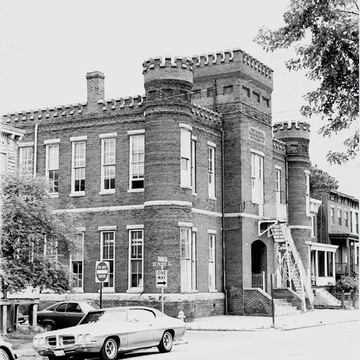Armories were a product of the 1870–1900 period, serving as men's clubs and as institutions for enforcing order at a time of strife in the American city. Nearly every American city of
You are here
First Battalion Armory
1895, Wilfred Emory Cutshaw. 122 W. Leigh St.
If SAH Archipedia has been useful to you, please consider supporting it.
SAH Archipedia tells the story of the United States through its buildings, landscapes, and cities. This freely available resource empowers the public with authoritative knowledge that deepens their understanding and appreciation of the built environment. But the Society of Architectural Historians, which created SAH Archipedia with University of Virginia Press, needs your support to maintain the high-caliber research, writing, photography, cartography, editing, design, and programming that make SAH Archipedia a trusted online resource available to all who value the history of place, heritage tourism, and learning.




















